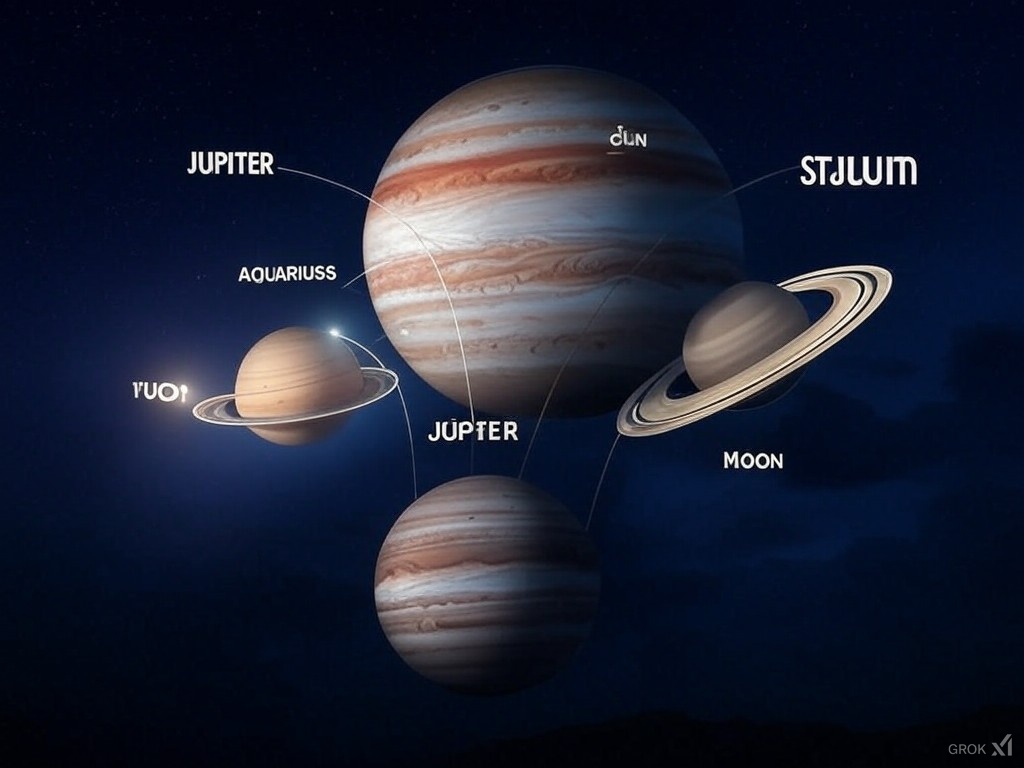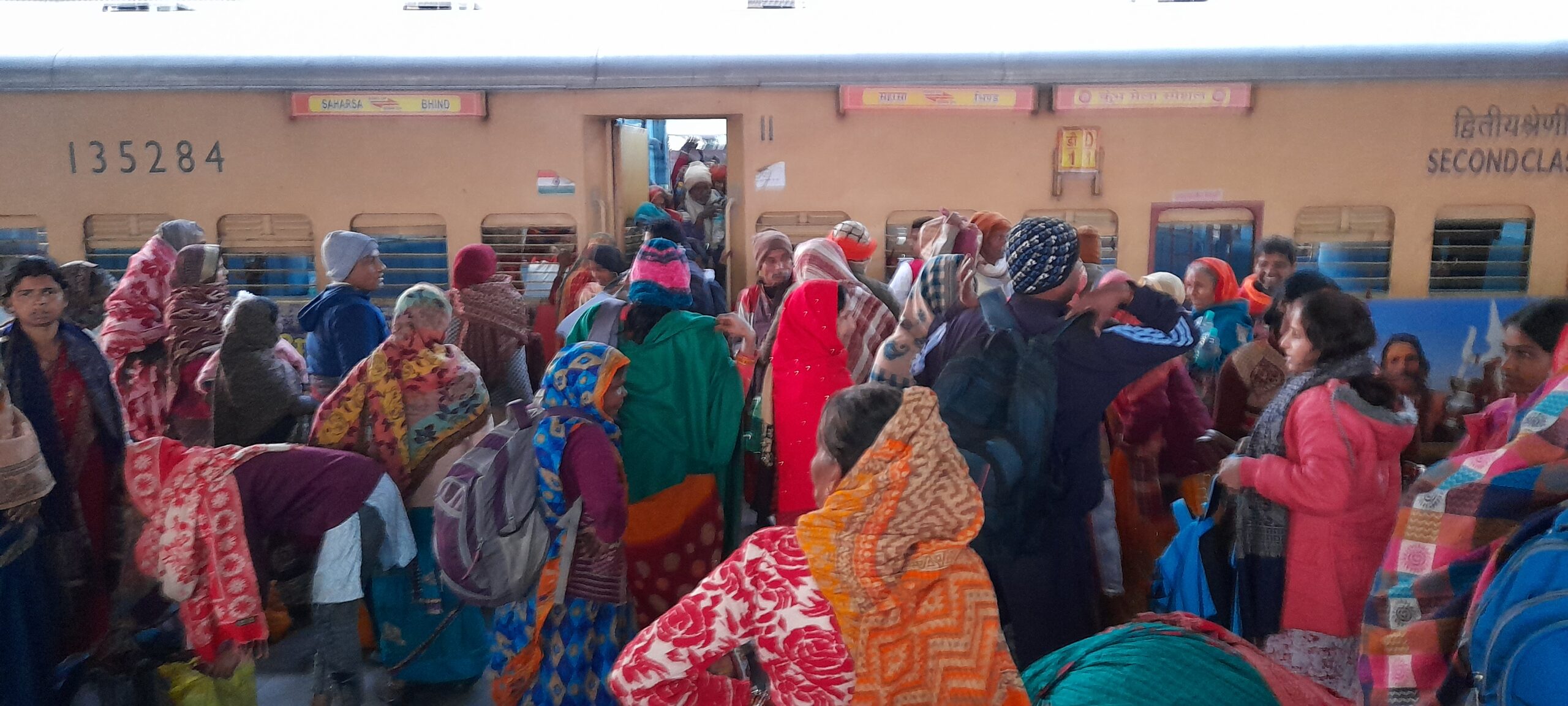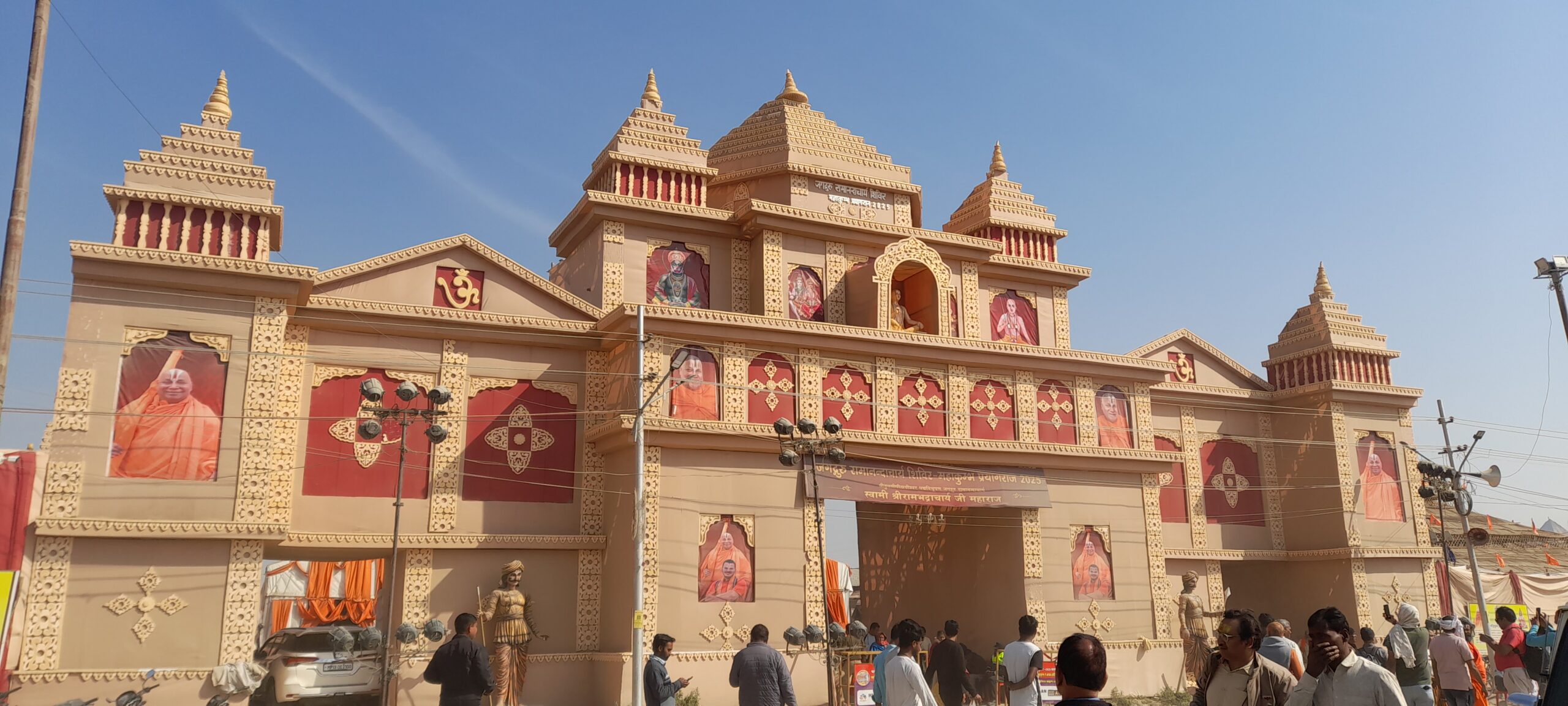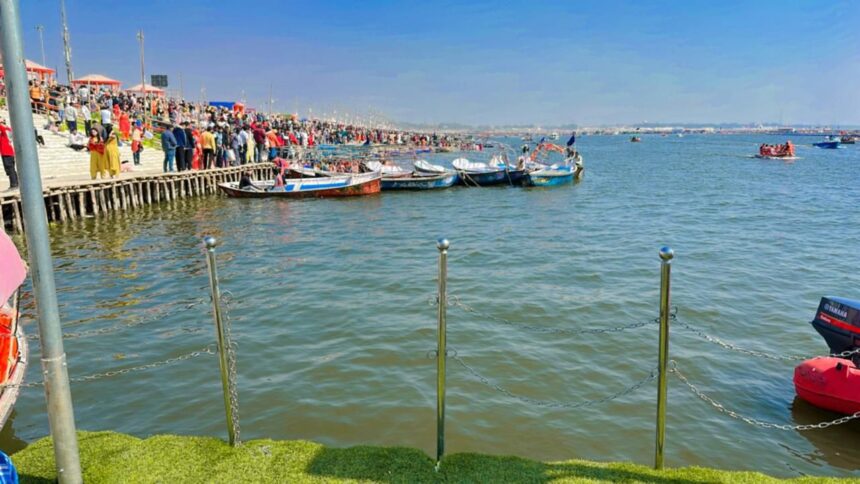Mahakumbha Spiritual Encounters 2025: My Divine Journey
Understanding Contours of Mahakumbha
As a part of my personal reflections for my weekly schedule on Sundays, this Sunday I have decided to speak about my visit to Mahakumbha that I concluded just now. The Kumbh Mela, known as one of the largest peaceful gatherings on Earth, is a Hindu pilgrimage that has been celebrated for thousands of years. The term ‘Kumbh’ refers to the sacred ‘pot’ of nectar, and ‘Mela’ means ‘fair’ or ‘festival’. The legend behind Kumbh Mela traces back to the Samudra Manthan, or the ‘Churning of the Ocean of Milk’, where gods (Devas) and demons (Asuras) fought over the pot of Amrita, the nectar of immortality. Drops of this nectar are believed to have fallen at four places in India: Haridwar, Prayagraj (formerly Allahabad), Ujjain, and Nashik, marking the locations for the Kumbh Mela.
The Mahakumbha, an extension of the Kumbh Mela, occurs once every 12 years in Prayagraj, with an even rarer Ardh Kumbh (every 6 years) and the grand Maha Kumbh every 144 years, based on complex astrological calculations involving planetary positions. Mahakumbha 2025 is particularly significant due to these celestial alignments, making it a once-in-a-lifetime event for many devotees.
It’s important to note that there is a very complex astronomical understanding to decide the days and period of the festival. The period of 12 years is tinkered in the same manner like having a leap year every four years and missing leap every 400 years and so on, indicating that ancient Indians understood the science of astronomical movements to a very degree of accuracy.
Historical Background of Mahakumbha

Historically, the Kumbh Mela has roots in ancient texts like the Puranas and the Mahabharata. It is a testament to the continuity of Hindu traditions, with records of similar gatherings dating back to at least the 6th century AD. Over centuries, it has evolved into a cultural phenomenon, attracting not only spiritual seekers but also scholars, historians, and tourists from around the world.
Celebration of Kumbh and Mahakumbha
The celebration of Kumbh Mela involves:
Holy Bathing (Snan): The core of the festival, where millions take a dip in the sacred rivers at precise, astrologically auspicious times, believed to cleanse sins and grant spiritual merit. The main bathing days include Makar Sankranti, Mauni Amavasya, Basant Panchami, and Maha Shivratri, with Mahakumbha 2025 adding Jaya Ekadashi to this list due to its unique alignment of celestial bodies.
Processions (Shahi Snan): These are led by various Akharas (sects of ascetics), each with its own traditions and rituals. The Divya Snan, or royal bath, is a spectacle where sadhus, naga (naked, beating the cold weather) babas, and other holy men parade to the river in a grand procession.
Spiritual Discourses and Practices: Throughout the mela, there are numerous tents and areas dedicated to spiritual teachings, yoga, meditation, and the recitation of scriptures. Renowned spiritual leaders and gurus give pravachans (discourses), providing insights into Hindu philosophy and practices. They also give shelter to anyone seeking it without favour or discrimination.
Cultural Heritage: The event is also a showcase of India’s cultural diversity, with performances of classical music, dance, and folk arts, alongside temporary markets selling everything from religious items to handicrafts.
Temporary City: For the duration of the mela, a massive temporary city is erected with facilities for accommodation, food, sanitation, pathways and driveways and security, showcasing the organizational prowess of the event’s planners.
The Mahakumbha 2025, an event steeped in centuries of spiritual significance, represents a confluence of faith, culture, and humanity. This grand festival, held at the sacred Triveni Sangam in Prayagraj, where the rivers Ganga, Yamuna, and the mythical Saraswati converge, brings together millions from around the globe seeking spiritual purification through the holy dip in its revered waters. My purpose in attending was not just to partake in this ritualistic cleansing but also to explore the profound spiritual teachings and experiences that such a gathering promises.
My Journey to the Divine Waters

My pilgrimage began on February 7th, 2025, a journey filled with anticipation for what lay ahead. The travel to Mahakumbha was more than just a physical transition; it was stepping into a realm where the mundane meets the divine. The atmosphere, charged with devotion, set the stage for the spiritual awakening I was about to experience.
Journey to the Sacred Site of Mahakumbha
Arriving at the bustling railway station, I was immediately thrust into the complex task of navigating my way to the Mahakumbha venue. The first leg of the journey involved finding transportation to the site, a challenge in itself. I took a bus that dropped me at the next road crossing. From there, I hopped onto an e-rickshaw, which left me a few kilometers away from my destination. To close the final gap, I resorted to hiring a bike—despite its questionable legality—and paid a hefty fee to get as close as possible to Sector 6, where I would be staying.
Exhausted from the travel and the heat, I walked the remaining 500 meters to Tulasi Ashrama. It was around 19:30 when I finally reached, and my body was pleading for rest. After a brief respite, I gathered the energy to attend the enlightening Ramayan Katha Pravachan by Jagatguru, followed by a satvik dinner that rejuvenated both body and spirit.
The next morning, I and my roommates in the tent awoke at 4:00 AM. By 5:00, we embarked on an hour-long walk to the Snan Ghat. The holy dip in the sacred waters was spiritually uplifting and provided a profound sense of renewal. Post dip, I enjoyed a simple breakfast of tea and snacks, and spent some time visiting Jagatguru for darshan, absorbing the peaceful aura that surrounded him.
I took the opportunity to stroll around the vast area of the Mahakumbha. The variety of bhandaras offering free food to pilgrims was a heartwarming sight, showcasing the spirit of community and generosity that defines the Kumbh Mela. I mingled with fellow pilgrims, sharing stories and reflections that enriched my understanding of the diverse tapestry of faith present here. The effort was to try to understand the dynamics of the celebrations.
After enjoying a fulfilling session of Ramayan Katha Pravachan with Jagatguru and a satisfying lunch, I began my journey back to the railway station to conclude my visit to Mahakumbha 2025. The return trip to the station was fraught with challenges:
- Initial Leg: My journey began with an expensive and somewhat precarious bike ride. Due to traffic restrictions near the station, I was dropped off significantly away from my destination.
- Middle Leg: From there, I managed to hitch a lift, which brought me closer but still about 2 kilometers away from the station. This was the nearest point vehicles were permitted to approach given the restrictions in place.
- Final Leg: Given my old age and the difficulties it posed, I found myself in need of further assistance to reach the station. I sought help from the local police, who were accommodating and helped me travel closer to the station. Despite their help, I still had a short distance to walk to reach the platform.
The train, unfortunately, was delayed by five hours, extending my wait at the station to nine hours. Despite these logistical challenges and physical exhaustion, the spiritual insights and uplifting experiences from the day provided a profound sense of fulfillment, making the arduous journey back a reflective and impactful conclusion to my pilgrimage.
Personal Experience as a Lucky Pilgrim
“One gets what one deserves.” This saying resonated deeply with me at Mahakumbha. Initially, I had no plans to bathe on a crowded day and thus did not choose a sacred day, anticipating the expected rush. However, the decision to go for Kumbha Snan happened at a snap when I was watching a video on the importance and the alignment of stars that happen once in 144 years. This video inspired me, leading to fate, or perhaps divine intervention, having other plans. My railway ticket’s availability inadvertently granted me the opportunity to immerse in the holy waters on Jaya Ekadashi, a day considered extremely auspicious. This unexpected blessing taught me about the serendipity that life, or perhaps the divine, can offer when least expected.
The Accommodation Experience at Tulasi Ashrama

Choosing to stay at Tulasi Ashrama in Sector 6 turned out to be another stroke of luck. Managed by the Tulsi Ashram Trust under the guidance of Jagatguru Rambhadracharya ji, a revered spiritual leader and scholar known for his profound knowledge of Hindu scriptures, this place offered more than just shelter. It became the venue for my spiritual enrichment. Here, I had the privilege of having darshan and listening to the revered scholar’s live Ramayan Pravachan. The experience was not merely about hearing an epic tale but about connecting with the spiritual essence that the narrative embodies, a lesson in humility, devotion, and the pursuit of knowledge.
Memorable Moments of Mahakumbha
The Mahakumbha was a canvas of spiritual highlights. Among them, witnessing the sea of humanity, all united in a singular purpose of spiritual upliftment, was profoundly moving. The sight of devotees chanting, the collective energy of millions in prayer, and the serene moments of silence before the Shahi Snan were moments etched in my memory, highlighting the unity and peace that spirituality can foster.
Key Takeaways from Mahakumbha 2025
Infrastructure Marvel: The Mahakumbha 2025 revealed an infrastructure that surpasses ordinary expectations, capable of accommodating a crowd twice as large as anticipated, with security risks minimized to isolated incidents.
Social Unity: The event dismantled myths about gender roles and caste systems in Hindu society, showcasing a significant female participation and a harmonious blend of all social strata in spiritual pursuit.
Diverse Demographics: A wide spectrum of attendees from across the globe and various walks of life, including special groups like Kalpvasis and international delegations, highlighted the universal appeal of the festival.
Logistical Challenges: While accommodations were claimed to be adequate, the lack of transparency in pricing and information availability posed real challenges. Transportation and navigation issues underscored the need for better planning and execution.
Crowd and Traffic Mismanagement: The distinction between managing and controlling crowds was blurred, leading to inefficient crowd control strategies, particularly by law enforcement, which impacted pilgrim experiences negatively.
Cultural and Spiritual Richness: The festival served as a live display of India’s cultural heritage and spiritual depth, with numerous platforms for spiritual discourse and practice.
Digital Integration: The ‘Digital Mahakumbh’ moniker was well-earned, with technology playing a significant role in enhancing visitor experience, from navigation to information access.
Safety and Hygiene: While personal observations noted no major issues, the loss of items and companions in crowded areas points to areas for improvement in vigilance and crowd management.
Unexpected Blessings: Personal experiences like the serendipitous holy dip on Jaya Ekadashi and the enriching stay at Tulasi Ashrama emphasized the unpredictable nature of spiritual rewards and the importance of openness to divine plans.
These learnings will be explored in greater detail in upcoming blogs, offering insights into each aspect’s impact on the overall experience of the Mahakumbha and its participants.
Reflections on Experiences of Mahakumbha
The unexpected blessings at Mahakumbha 2025 have shaped my spiritual journey in ways I couldn’t have anticipated. The serendipitous holy dip on Jaya Ekadashi and the enriching experiences at Tulasi Ashrama taught me about the unpredictability of spiritual rewards and the importance of being open to the divine’s plan. These moments have not only deepened my faith but also my understanding of how life’s greatest lessons often come in the most unexpected forms, reinforcing the belief that one indeed gets what one deserves, sometimes in the most beautiful and surprising ways.
The next blog can be accessed by clicking here.
Feature Image: Click here to view the image.
Visit our Youtube Channel by clicking here.
Click here to visit the related page on Medium.com
Follow us on our social median handles
Glossary of Terms:
- Kumbh Mela: A massive Hindu pilgrimage and festival that occurs cyclically at four locations in India, where devotees gather to bathe in sacred rivers for spiritual purification.
- Maha Kumbh: An especially significant Kumbh Mela that occurs once every 144 years at Prayagraj, considered the most auspicious of all Kumbh Melas.
- Mahakumbha: A term referring to the grand Kumbh Mela held in Prayagraj every 12 years, which is larger and more significant than regular Kumbh Melas.
- Ardh Kumbh: A Kumbh Mela held every 6 years, which translates to “half Kumbh”, occurring between the 12-year cycles of Mahakumbha.
- Samudra Manthan: A mythological event from Hindu scriptures where gods and demons churned the ocean to obtain the nectar of immortality, Amrita. This story is central to the legend of Kumbh Mela.
- Amrita: The nectar of immortality in Hindu mythology, central to the Kumbh Mela legend where drops of it are believed to have fallen at the four Kumbh Mela sites.
- Triveni Sangam: The confluence of three sacred rivers in Prayagraj – Ganga, Yamuna, and the mythical Saraswati, where the Mahakumbha is held.
- Snan: The act of taking a holy bath, particularly in the context of Kumbh Mela for spiritual cleansing.
- Shahi Snan: A “royal bath” where various Akharas (sects of ascetics) take a ceremonial dip in the river, a major highlight of the Kumbh Mela.
- Akharas: Traditional groups or sects of sadhus (holy men) who follow specific spiritual practices and rituals, each with distinct traditions at Kumbh Mela.
- Naga Sadhus: A specific group of ascetics at Kumbh Mela who traditionally bathe naked, symbolizing renunciation of material life.
- Pravachan: A discourse or sermon, often given by spiritual leaders during religious gatherings like Kumbh Mela, focusing on teachings from Hindu scriptures.
- Darshan: The act of seeing or being seen by a deity or a holy person, often considered spiritually uplifting.
- Kalpvasis: Pilgrims who stay in temporary camps at Kumbh Mela for a spiritual practice known as Kalpvas, involving strict rituals and vows for spiritual merit.
- Jaya Ekadashi: A significant Hindu fasting day dedicated to Lord Vishnu, which, during Mahakumbha 2025, was an additional day for holy bathing due to celestial alignments.
- Ramayan Pravachan: A discourse or lecture on the epic “Ramayana”, where the story is narrated or discussed for spiritual and moral education.
Top #Tags: #KumbhMela #SpiritualJourney #HinduPilgrimage #Mahakumbha2025 #DivineEncounters #Mahakumbha2025, #KumbhMela, #SpiritualJourney, #HinduPilgrimage



Leave a Reply